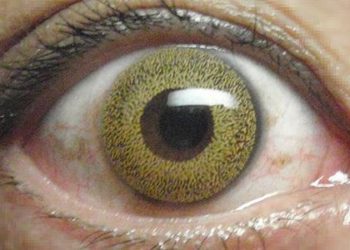2 Minute Medicine Rewind February 10-16, 2014
Image: PD
In this section, we will highlight the key high-impact studies, updates, and analyses published in medicine during the past week.
The use of mammography in breast cancer screening has been accepted as standard practice, though the risks (particularly overdiagnosis) and benefits have been debated in recent years. In this 25-year follow up of a randomized screening trial, nearly 90,000 Canadian women ages 40-59 were assigned to 5 years of annual mammography and clinical breast exam or the control arm (routine care (ages 40-49) or annual clinical breast examination alone (ages 50-59)). The primary outcome was breast cancer mortality. At 25 years, there was no difference in all-cause mortality (10.6%, p=.28) or in mortality from breast cancers diagnosed during the screening period (HR 1.05, 95%CI 0.85-1.30, p=.63). During the screening period, cancers diagnosed in the mammography arm were smaller than the control arm (p=.01), but were no less likely to be node positive (p=.53). Although survival was significantly longer for cancers diagnosed by mammography alone (HR 0.79, 95%CI 0.64-0.97, p=.02), the authors attributed this to lead time, length time bias, and over-diagnosis. Half of screen-detected, non-palpable cancers were believed to be overdiagnosis, and there was one over-diagnosed cancer in every 424 women screened with mammography. This study brings into question the widespread acceptance of screening mammography in preventing breast cancer mortality.
Risk of a Thrombotic Event after the 6-Week Postpartum Period
It is well established that thrombotic risk is elevated during the 6-week postpartum period, though it is less clear whether or how long that risk persists for beyond the first 6 weeks. In this retrospective crossover-cohort study, investigators compared the likelihood of hospitalization or emergency room visit for a first thrombotic event (ischemic stroke, myocardial infarction, or venous thromboembolism) in sequential 6-week periods following delivery to the corresponding 6-week period 1 year later for nearly 1.7 million Californian women in order to determine how long the increased risk for thrombotic events persists. Compared to the same period 1 year post-partum, significantly more thrombotic events occurred during the initial 6 weeks after delivery (absolute risk difference 22.1 per 100,000 deliveries, OR 10.8, 95%CI 7.8-15.1) and also the 7-12 week period, though the absolute risk difference (3.0 per 100,000 deliveries) is much smaller (OR 2.2, 95%CI 1.5-3.1). Post-hoc analysis revealed that elevated thrombotic risk persisted at 13-15 weeks (OR 2.0, 95%CI 1.1-3.6).
Risk of End-Stage Renal Disease Following Live Kidney Donation
Although live kidney donors have similar survival rates as healthy non-donors, and they may not have increased risk of end-stage renal disease (ESRD) compared to the general population, it is unclear whether these donors are at higher risk for ESRD than they would otherwise have been had they not donated, an important consideration in discussions of informed consent. In this retrospective cohort study, authors determined the risk of ESRD among 96,217 live kidney donors as compared to 9,364 matched (based on age, sex, race, educational background, BMI, smoking history, and systolic blood pressure) healthy non-donors who were participants in the 3rd National Health and Nutrition Examination Survey. Overall, the absolute risk of ESRD at 15 years after donation was significantly higher than the healthy nondonors (30.8 vs 3.9 cases per 10,000, p<.001). The absolute risk increase was most pronounced between black donors and non-donors (50.8 per 10,000, p<.001) and smallest among whites (22.7 per 10,000, p<.001). Although the lifetime risk of ESRD was higher among donors than healthy non-donors at all ages, live donors still had a much lower lifetime risk of ESRD than the general population at 80 years of age (90 vs 326 per 10,000).
The relative benefit of 3 (rather than 1 or 2) doses of the human papilloma virus (HPV) vaccine is unclear though such knowledge would have significant impact on public health policy and vaccination campaign strategy. In this retrospective cohort study of all females ages 10-24 (n=1.05 million) in Sweden from 2006 to 2010, researchers determined the relationship between vaccine dose and first occurrence of condyloma. Cumulative incidence proportion of condyloma in vaccinated vs unvaccinated women began to differ at 3 months of follow-up. Maximum reduction in condyloma risk was seen after 3 vaccine doses for all women ages 10-19 (incidence rate ratio (IRR) 0.23 compared to unvaccinated women, 95%CI 0.18-0.29), although those vaccinated at a younger age experienced greater benefit. Even 1 or 2 doses conferred significant protection (IRR 0.32 after 2 doses and 0.54 after 1 dose, p<.001 compared to unvaccinated). The number of cases prevented by 3 doses rather than 2 was 66 cases per 100,000 years (p=.002), which, while significant, is small.
Emergency medicine physicians do not routinely screen for and often miss cases of delirium in older patients, in part because no validated brief screening tool is in place. In this prospective observational study, investigators evaluated a convenience sample of 406 patients >65 years (median 73.5 years) who presented to a tertiary emergency room using both a thorough psychiatric assessment and the Confusion Assessment Method for the Intensive Care Unit (CAM-ICU), a brief (<1 minute) delirium screen, in order to determine the validity of the CAM-ICU in an emergency room setting. Psychiatric evaluation diagnosed 12.3% of those enrolled with delirium. Both the emergency physician and a research assistant performed the CAM-ICU, and interrater reliability was excellent (k=0.92). The CAM-ICU, when performed by the emergency physician, was highly specific (98.6%), but less sensitive (72.0%), meaning a positive test was highly suggestive of delirium (positive likelihood ratio 51.3, 95%CI 21.1-124.5), but a negative test only moderately reduced the likelihood of delirium (negative likelihood ratio 0.28, 95%CI 0.18-0.44). Sensitivity increased with increased illness severity and in patients with dementia.
© 2012-2014 2minutemedicine.com. All rights reserved. No works may be reproduced without written consent from 2minutemedicine.com. Disclaimer: We present factual information directly from peer reviewed medical journals. No post should be construed as medical advice and is not intended as such by the authors or by 2minutemedicine.com. PLEASE SEE A HEALTHCARE PROVIDER IN YOUR AREA IF YOU SEEK MEDICAL ADVICE OF ANY SORT. Content is produced in accordance with fair use copyrights solely and strictly for the purpose of teaching, news and criticism. No benefit, monetary or otherwise, is realized by any participants or the owner of this domain.



![2MM: AI Roundup- AI Cancer Test, Smarter Hospitals, Faster Drug Discovery, and Mental Health Tech [May 2nd, 2025]](https://www.2minutemedicine.com/wp-content/uploads/2025/05/Untitled-design-350x250.png)





